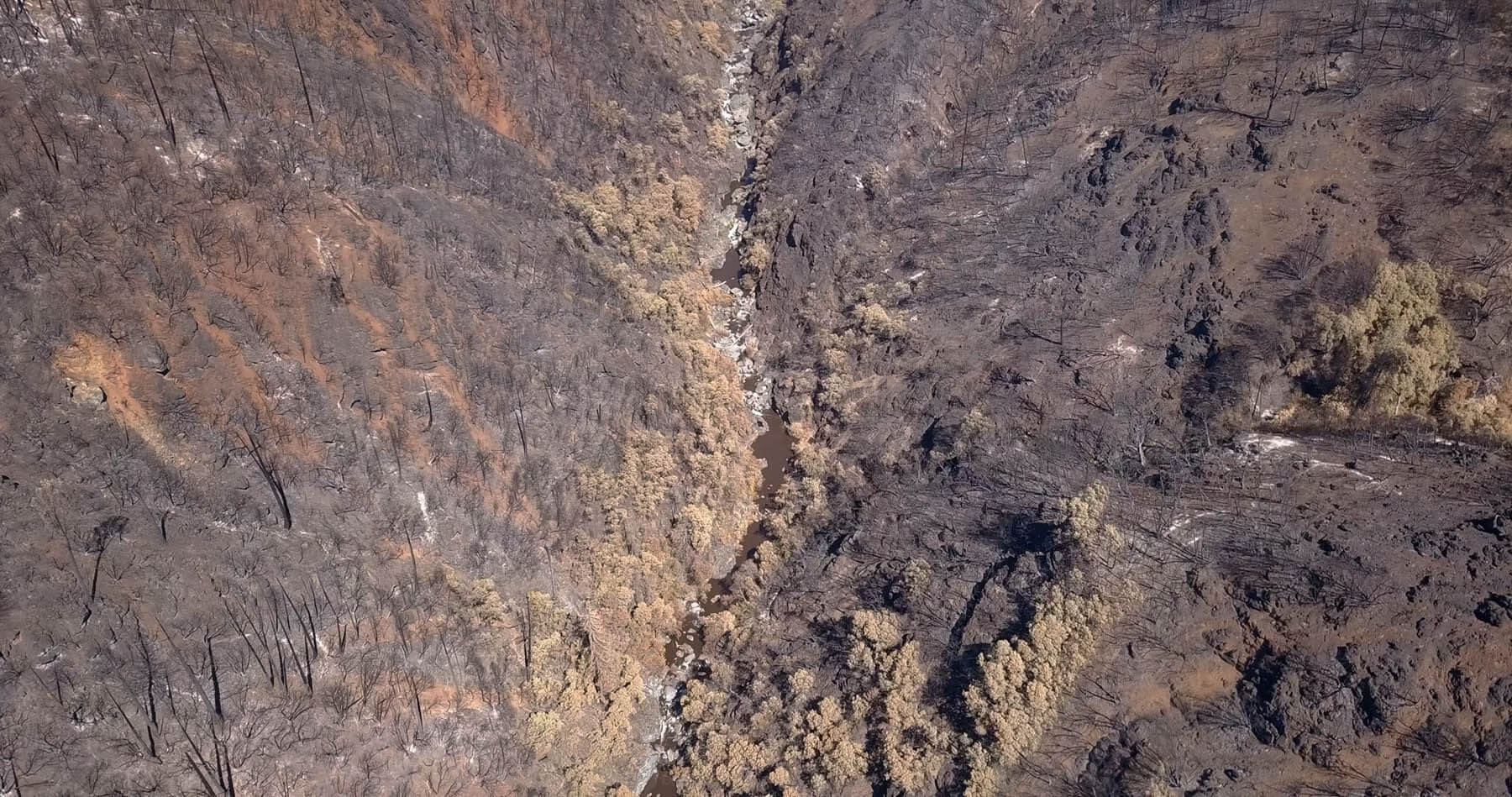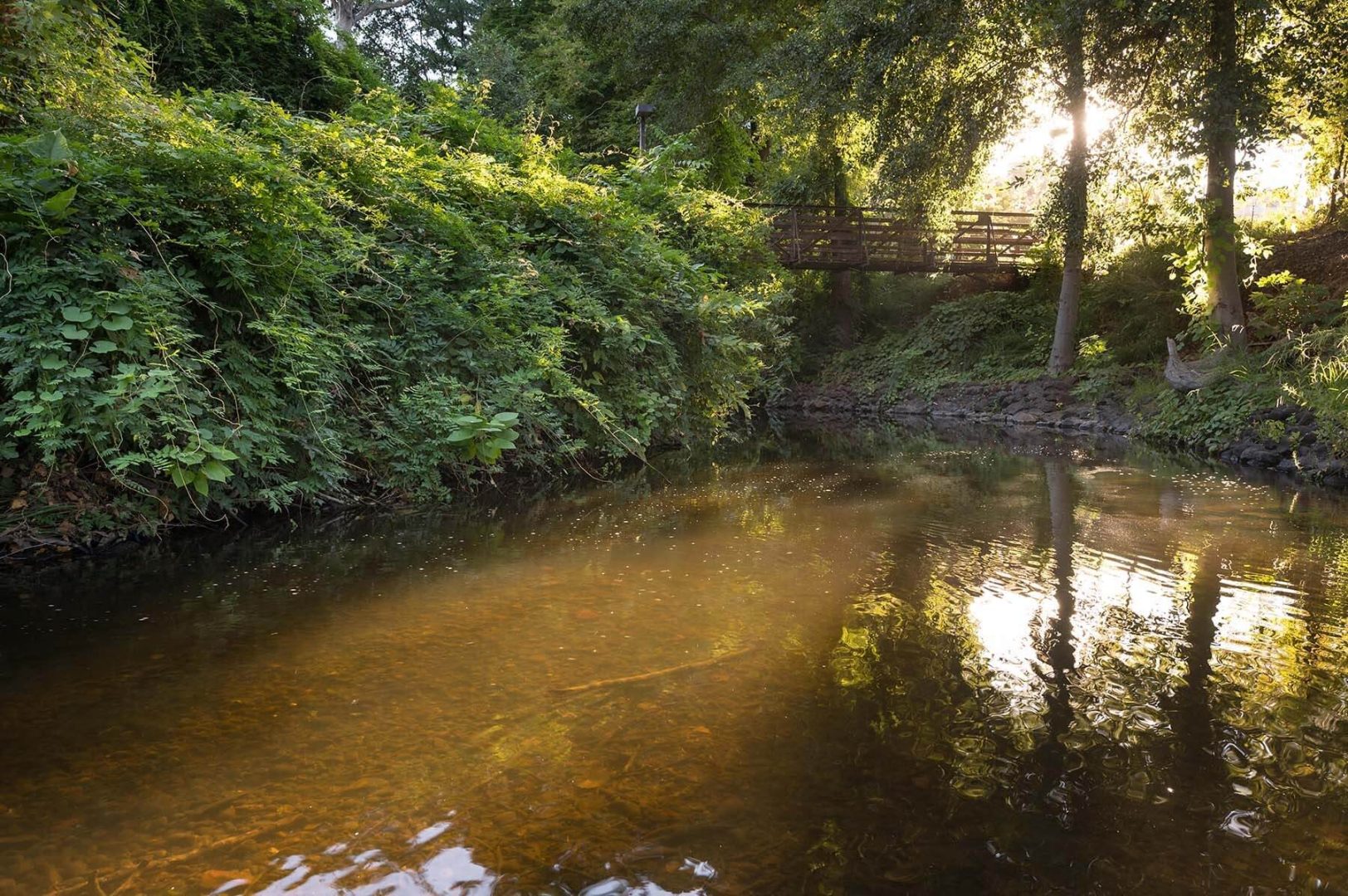Chico State’s Ecological Reserve Calls for Action after Park Fire as Big Chico Creek Turns Brown from Sediment

Big Chico Creek runs dark brown in the scorched canyon of the Big Chico Creek watershed. (Photo courtesy of FishBio)
As the clear waters of Big Chico Creek turned milky brown this week from sediment carried downstream from the Park Fire burn scar, leaders of the University’s Big Chico Creek Ecological Reserve (BCCER) are pointing to it as a clarion call for urgent action to protect the health of the beloved watershed.
An early rainfall this weekend led to what is believed to be a landslide or mudflow upstream from BCCER, which pushed high volumes of sediment into Big Chico Creek that is now being carried downstream and has reached the Chico State campus.
“This turbidity we are seeing is a shot across the bow. It is a warning of what can be expected this winter when we are seeing more consistent and larger rainfalls,” said Eli Goodsell, executive director of the BCCER. “We and our partners are deeply concerned about the resulting impacts to native fish and other species that rely on Big Chico Creek, its riparian zone, and ecosystem.”
The BCCER is a partner in the Big Chico Creek Emergency Action Collaboration, which formed during the Park Fire and is working to rapidly secure and deploy resources to protect the waters and ecosystems of Big Chico Creek. Other collaborators include the Resource Conservation District, the City of Chico, the Mechoopda Tribe, Butte County Fire Safe Council, and private landowners in the watershed. The group’s priorities include slowing water down and reducing sediment flow from tributaries that run into the creek.
Individuals who want to support this emergency work can donate directly to the Big Chico Creek Emergency Fund, as part of a fundraising campaign launched this week, or to the North Valley Community Foundation.
This week, the collaborative is meeting with a technical advisory committee, including US Geological Survey and other federal and state agencies, to develop the technical components of the project, and conferring with permitting agencies. The goal is to be approved for environmental compliance by the end of September, clearing the way to work on mitigation projects through October and into November before further rains.
“Big Chico Creek is a fish-bearing stream now at risk of significant post-fire sedimentation and upland erosion,” said Thad Walker, district manager with the Butte County Resource Conservation District. “We look forward to partnering with BCCER, other landowners in the watershed, agencies, and our community to implement a cross-boundaries project that will rapidly deploy process-based restoration techniques to protect downstream users, water quality, and the Big Chico Creek ecosystem that we all love so much. Meeting the urgency of this need can only be accomplished through a shared vision and collaboration with partners like BCCER.”
Big Chico Creek originates at Colby Mountain on the Lassen Nation Forest and flows 45 miles to its confluence with the Sacramento River. Much of its watershed falls within the Park Fire burn scar, including the communities of Cohasset, Forest Ranch, and Richardson Springs, as well as the entirety of Bidwell Park and the Big Chico Creek Ecological Reserve.

Mirroring its surrounding landscape, the BCCER was significantly impacted by the Park Fire, with the majority of its 7,835 acres burned over. BCCER is well-established to be a partner in the watershed’s protection and recovery, not only because of its mission for environmental conversation and stewardship but also because it has the expertise, infrastructure, and connections to support the fundraising and overall work, Goodsell said.
“With the size of the watershed, we will not be able to treat every tributary affected by the Park Fire. However, this project does have the opportunity to mitigate significant habitat loss of Big Chico Creek between now and the winter rains,” Goodsell said. “We will be securing larger funding to continue this work into the long term as well, knowing there could be a second pulse in the winter of 2025–26.”


